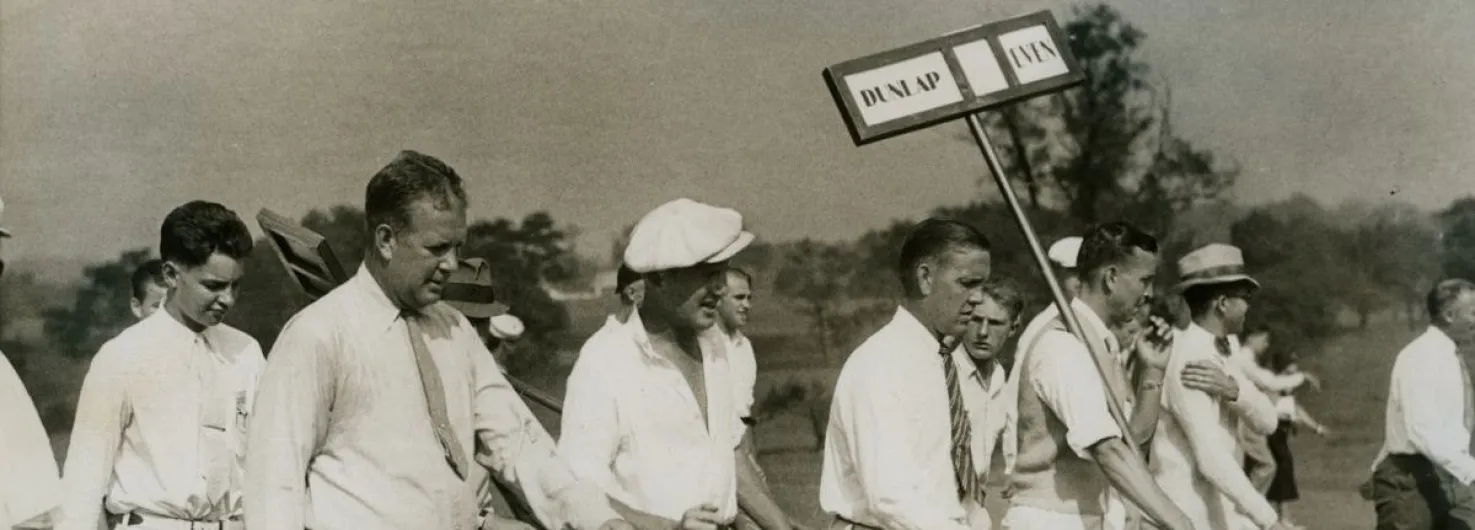A Retrospective: Important Dates in New Jersey Golf - June Edition

Photo: Max Marston (left, wearing tie)
Each month, the NJSGA features historical moments in New Jersey golf history by Kevin Casey, author of Remarkable Stories of New Jersey Golf. Here is a look at notable June dates:
June 3, 1881, and June 20, 1906 – Birth dates of course architects Charles Banks and Robert Trent Jones, respectively. Important contributors to New Jersey – and national-level – golf, both are credited for accelerating the transition of golf course design to new eras. Banks, who has eight New Jersey courses to his credit, earned the nickname “Steamshovel” for his willingness to use mechanized power (as opposed to mules and men) to create memorable golf within the “template hole” philosophy he shared with collaborators C.B. Macdonald and Seth Raynor. Jones, a longtime member of Montclair Golf Club with 23 New Jersey designs (among 400 worldwide) to his credit, has been described as the man who turned golf course architecture into a modern business by creating the globetrotting and highly professional designer archetype.
June 12, 1892 – Amateur golfer Max Marston was born in Cranford. A force in tournament golf between 1915 and 1933, Marston won two NJSGA Amateur championships and, in 1923, crafted the most spectacular season of any American amateur until Bob Jones’ 1930 Grand Slam. In a few short months, he won two matches in America’s first Walker Cup, won the Golf Association of Philadelphia’s medal- and match-play championships, and captured the Pennsylvania Amateur. Capping off a great summer, he won the U.S. Amateur, outplaying the current U.S. Open champ Jones, legendary Francis Ouimet, and finally, defending champion Jess Sweetser in a 38-hole U.S. Am finals match. In so doing, Marston became the last New Jersey product to win the U.S. Amateur. He was elected to the NJSGA Hall of Fame in 2021.
June 18, 1967, and June 15, 1980 – Jack Nicklaus won his second and fourth U.S. Opens in New Jersey, both at Baltusrol Golf Club in Springfield. In 1967, Nicklaus was slowly wresting the “world’s best golfer title” away from the older and far more popular Arnold Palmer. Jack’s final-round 65 may have done the trick, overwhelming runner-up Palmer’s otherwise excellent 69 for a four-shot win. In 1980, many pundits considered Nicklaus past his prime, having won only one major since 1975. Stung by that criticism, Nicklaus considered this – his last U.S. Open victory – among the most satisfying of his record 18 major wins.
